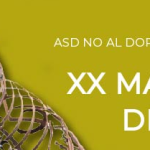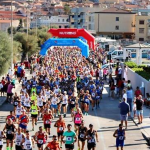Categories of medicinal cannabis product have been determined primarily based on proportion of cannabidiol content material compared with the whole cannabinoid content material of the medicine. The important points to know about the extraction process are that (1) extraction aims to purify and concentrate (and ?????? ????? ???? may decarboxylate) the cannabinoids current within the plant material, leading to higher cannabinoid quantities per unit volume than in the plant; (2) different undesired substances may also be extracted and concentrated throughout the process; and (3) in the absence of sufficient purification, contaminants (including the solvent) may stay in the ultimate product. Ideally, following extraction, the resulting oil is purified to remove the solvent and any contaminants (e.g., heavy metals, pesticides) that will have been extracted from the plant together with the cannabinoids. Although heating cannabis to excessive temperatures throughout extraction converts the acidic cannabinoids into active compounds, it also could remove many of the volatile terpenes (Romano & Hazekamp, 2013). Methods of extraction are variable, however the most common procedures depend on using a solvent to separate and focus the desired chemicals from the plant material.
The plant incorporates over 400 chemical compounds, of which approximately 80 are biologically active chemical molecules. Although cannabis contains quite a few chemical constituents, two are key to present discussions of medicinal properties of the plant: ?9-tetrahydrocannabinol (THC) and cannabidiol (CBD) (Figure 2). THC is primarily accountable for cannabis’s intoxicating results (reviewed in Gaoni & Mechoulam, 1964), though it might also contribute to therapeutic results of the cannabis plant (Wilkinson et al., 2003). Through selective breeding and indoor cultivation, THC’s concentration in cannabis strains used specifically for intoxication has elevated dramatically in recent times (ElSohly et al., 2016). A flowering prime (or “bud”) of a Sinsemilla (feminine, nonfertilized) cannabis strain excessive in THC could also be expected to include ranges of up to 20 to 25 % whole THC (primarily in its acid kind); relatively simple processes can be used to concentrate the THC into hashish or ?? ????? hash oil preparations exceeding 50 p.c whole THC content material (Chandra et al., 2019; Jikomes & Zoorob, 2018; Smart, Caulkins, Kilmer, Davenport, & Midgette, 2017). More complicated extraction processes or purification procedures can produce cannabis extracts with THC concentrations of sixty eight p.c or larger which can be increasingly encountered in the consumer market (Hädener, Vieten, Weinmann, ?????? ????? & Mahler, 2019; Raber, Elzinga, & Kaplan, 2015; Smart et al., 2017; Stogner & Miller, 2015). Conversely, high-CBD strains might include 10.9 to 18.9 percent CBD (primarily in its acid kind), with minimal THC content material (Rahn, 2018). Simple processing procedures additionally may be used to increase CBD concentrations in merchandise.
Currently, CBD has only been approved for children ages two and older who endure from the seizure disorders Lennox-Gastaut syndrome and Dravet syndrome. The FDA approved CBD in 2018, and it’s the only FDA-accredited treatment for patients with Dravet syndrome. Synthetic cannabis-associated drug products Two merchandise containing the active ingredient dronabinol (a synthetic ?9-THC) for the remedy of anorexia associated with weight loss in AIDS patients. Purpose of review: Global policy changes have elevated entry to merchandise containing cannabidiol (CBD), a main constituent of hemp and cannabis. 5) of aqueous merchandise tested with a most THC concentration of 0.0005% w/v, and a minimum concentration of 0.0002% w/v. 6) of oils with a maximum concentration of 0.2% w/v and a minimal focus of 0.036% w/v. 1) of oils had been over-labeled. 2) of oils lacked specific CBD label claims, minimum of 0.3 mg CBD per 1-ml “dose”. Untruthful or ??????? ?????? unsubstantiated health-related claims, and unallowed Drug claims, in advertising supplies and labels of CBD merchandise could create hurt by enticing customers to forgo more proof-based mostly medical interventions. There may be substantial curiosity among shoppers and the medical and scientific communities regarding the therapeutic potential of CBD, together with for novel indications that are not recognized by the FDA.
Hence, customers mustn’t assume that consumption of CBD in a meals or ?????? ????? beverage product is acknowledged by the FDA as secure. Method: Samples have been diluted and analyzed by HPLC for CBD, THC, and CBN concentrations so as to evaluate product label accuracy. Further, it’s the first and solely FDA-approved use of CBD, although the product is currently under investigation for potential use in varied psychiatric, neurodegenerative, inflammatory, and cancerous diseases. These lists needs to be used where TGA approval has been obtained and the prescriber requires assistance in selecting a product from the proper class, or the pharmacist wishes to make sure that the lively ingredient(s) on the prescription matches the class within the TGA approval letter. The TGA is unable to provide advice in relation to specific products in these lists and recommends contacting the relevant sponsor. The lists are based mostly on obligatory sponsor six month-to-month reporting information submitted to the TGA. Medicinal cannabis merchandise not supplied through the Special Access Scheme or Authorised Prescriber scheme, or experiences submitted by sponsors after the required reporting timeframe has ended are not included on this record.








